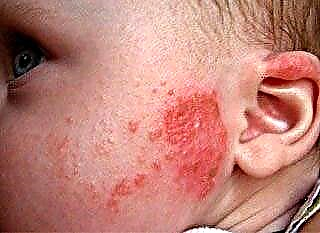Difficulty breathing occurs due to obstruction of the nasal passages, which is often associated with swelling of the mucous membranes, neoplasms and stagnation of nasal exudate in the nasopharynx. Breathing impairment is accompanied by a decrease in smell and hearing, nasal voice, periodic sneezing and snoring during sleep. From the article you will learn why a stuffy nose without a runny nose and what accompanying symptoms indicate the development of pathologies.
The essence of the phenomenon
 Usually, difficulty with nasal breathing is associated with the appearance of a runny nose, accompanied by profuse mucous discharge from the nasopharynx. According to practical observations, obstruction of the internal nasal openings (choanas) is not always associated with the accumulation of nasal secretions in the airways. Quite often, situations arise in which nasal breathing is difficult, but there is no runny nose.
Usually, difficulty with nasal breathing is associated with the appearance of a runny nose, accompanied by profuse mucous discharge from the nasopharynx. According to practical observations, obstruction of the internal nasal openings (choanas) is not always associated with the accumulation of nasal secretions in the airways. Quite often, situations arise in which nasal breathing is difficult, but there is no runny nose.
Obstruction (obstruction) of the nasopharynx usually occurs for two reasons:
- choanal blockage with viscous mucus;
- swelling of the airways, which prevents air from entering the lower airways.
Breathing difficulties are triggered by a range of infectious and non-infectious causes. Depending on the nature of the pathological manifestations, there are several forms of nasal congestion:
| The form | Characteristic manifestations | Probable causes |
|---|---|---|
| chronic (sluggish) | nasal breathing is absent for 2 or more months, the use of drugs does not bring significant relief | endocrine disorders chronic infectious diseases deformation of the nasal septum hypertrophy of the turbinates |
| periodic | nasal obstruction is moderately expressed, exacerbated only periodically when exposed to provoking factors | insufficient air humidity hay fever (allergic rhinoconjunctivitis) medication rhinitis |
| morning | the nose is stuffed up exclusively in the morning after waking up | onset of infectious ENT disease posterior rhinitis allergic rhinitis |
| night | appears only at night or when lying down | allergy to fillers in pillows and woolen blankets dry indoor air swelling in the nasopharynx |
Self-medication of nasal obstruction often exacerbates health conditions and the development of side diseases.
It is not always possible to independently find out why the nose is stuffing up. The manifestations of most diseases that are accompanied by an unpleasant symptom are nonspecific. Therefore, when a nasal obstruction appears, it is necessary to undergo a diagnosis by an ENT doctor, who can use an instrumental method to determine the cause of the breathing disorder.
Exogenous causes
As a rule, the causes of nasal congestion without a runny nose are the adverse effects of exogenous (external) factors. Sudden changes in temperature, dry and dusty air, medicines can negatively affect the function of the respiratory system. Drying out of the mucous membrane entails swelling of the soft tissues, as a result of which the patency of the nasal passages is impaired. This is one of the reasons for the appearance of nasal obstruction.
Drug abuse
The causes of nasal congestion without a runny nose often lie in the irrational use of pharmaceutical preparations. People with headaches, cardiovascular diseases and impaired cerebral circulation often abuse vasodilator drugs. Regular use of drugs negatively affects the tone of the blood vessels, as a result of which blood plasma seeps into the tissues and provokes edema.
In most cases, nasal obstruction manifests itself against the background of irrational use of such pharmaceuticals as:
- glucocorticosteroids;
- decongestants;
- oral contraceptives;
- vasodilators.
Drug overdose is fraught with angioedema of tissues and complete blockage of the airways.
Work in hazardous production
Work in hazardous workplaces is the second most common cause of nasal breathing difficulties. Molecules of paints and varnishes, cement dust, chemical fumes negatively affect the functioning of the nasopharynx. With prolonged exposure to exogenous factors, the mucous membrane undergoes pathological changes, as a result of which the risk of developing oncological pathologies significantly increases.
If congestion is present, but no snot, you need to conduct a course of sanitizing procedures. This is especially true for people working in the construction industry. Rinsing the nose with saline solutions clears the airways from dust and dirt and thereby restores normal choanal patency.
When working with bulk and toxic materials, it is necessary to use personal protective equipment - respirators and full face dust masks.
Dry air
Insufficient air humidity is the main trigger for inflammation of the mucous membranes in the ENT organs. Drying out of the ciliated epithelium, which covers the entire nasopharynx, leads to dysfunction of the external secretion glands. Insufficient production of nasal mucus is accompanied by irritation of soft tissues and, accordingly, swelling of the respiratory tract and accessory sinuses.
Dehydration in the nasopharynx is indicated by:
- frequent sneezing;
- tickling and itching;
- dry crusts in the nasal openings;
- decreased sense of smell.
 During the heating season, indoor air humidity can drop to critical levels of 20-25%. When the nose is stuffed up, and there is no nasal discharge, you need to take care of humidifying the air in the house. To restore the function of the goblet exocrinocytes (unicellular glands in the mucous membrane), you need to maintain a normal level of humidity in the room. Otolaryngologists believe that a humidity of 60-70% is optimal for the normal functioning of the nasopharynx.
During the heating season, indoor air humidity can drop to critical levels of 20-25%. When the nose is stuffed up, and there is no nasal discharge, you need to take care of humidifying the air in the house. To restore the function of the goblet exocrinocytes (unicellular glands in the mucous membrane), you need to maintain a normal level of humidity in the room. Otolaryngologists believe that a humidity of 60-70% is optimal for the normal functioning of the nasopharynx.
Infectious causes
Nasal obstruction always accompanies the development of an infection in the upper respiratory system. With the development of a cold, nasal discharge occurs approximately 2-3 days after the penetration of viruses into the respiratory tract. Until this time, patients may complain of morning nasal congestion, sore throat and nasopharynx, malaise, etc.
Rhinosinusitis
Chronic inflammation in the nasopharynx and paranasal sinuses is called rhinosinusitis. Pathological reactions in the tissues lead to edema of the anastomoses connecting the paranasal sinuses with the nasal cavity. Deficiency of oxygen in the sinuses stimulates inflammation, which leads to impaired airway patency.
In the chronic course of the disease, nasal mucus is produced in small quantities, so patients rarely complain of rhinorrhea (acute runny nose). Typical manifestations of sinusitis include:
- difficulty with nasal breathing;
- nasal voice;
- heaviness in the paranasal sinuses;
- headache;
- periodic lacrimation.
Delayed treatment of sinusitis leads to inflammation of the bronchi (bronchitis), lungs (pneumonia), middle ear (otitis media).
Treatment of the disease is carried out with hormonal anti-inflammatory drugs and antibiotics.Neglected forms of sinusitis and frontal sinusitis are treated with the help of a minimally invasive operation, during which pus is pumped out of the inflamed sinuses.
ARVI
 When there is no mucous discharge and the nose is not breathing, a viral respiratory infection is diagnosed in 7 out of 10 cases. As already mentioned, at the initial stage of ARVI development, a runny nose does not appear. In this case, inflammation and swelling caused by the pathogenic flora leads to obstruction of the nasopharynx.
When there is no mucous discharge and the nose is not breathing, a viral respiratory infection is diagnosed in 7 out of 10 cases. As already mentioned, at the initial stage of ARVI development, a runny nose does not appear. In this case, inflammation and swelling caused by the pathogenic flora leads to obstruction of the nasopharynx.
In rare cases, the clinical manifestations of the disease are mild. As a rule, the following symptoms indicate the development of ARVI in adults:
- sore throat;
- muscle pain;
- feeling overwhelmed;
- difficulty with nasal breathing;
- feverish condition;
- headache.
SARS is a whole group of ENT diseases, which include influenza, adenovirus and rhinovirus infection, parainfluenza, etc.
Posterior rhinitis
Posterior rhinitis is an inflammation of the nasal mucosa, in which the resulting nasal mucus flows down the back of the nasopharynx. The disease is caused by nonspecific microorganisms - rhinoviruses, adenoviruses, meningococci, etc. The cause of inflammation of the ENT organs can be an allergic reaction, mucosal injury, foreign objects in the nasal passages, side effects from taking medications.
Late treatment of posterior rhinitis leads to chronic inflammation and the development of side diseases - laryngitis, pharyngitis, tonsillitis, etc.
The disease is characterized by the following symptoms:
- whistling while breathing;
- morning cough;
- bad breath;
- dryness in the nasal passages;
- constant sneezing;
- mucus in the throat.
With posterior rhinitis, hypertrophy (thickening) of the mucous membranes is often observed. Due to the proliferation of soft tissues, nasal obstruction only intensifies, which negatively affects the patient's quality of life.
Cancer causes
The category of oncological diseases includes tumors that can consist of bone and soft tissues, blood vessels, nerve fibers, etc. Many people mistakenly believe that oncology studies the causes of the development and methods of treatment only for malignant neoplasms. In fact, even papilloma and polyps can be attributed to oncological diseases, but with a favorable course.
Benign tumors
Quite often, obstruction of the airways in the nasopharynx is associated with the appearance of benign tumors. Pathological neoplasms occur as a result of a violation of the process of cell division and development. During the formation of a tumor, patients practically do not experience discomfort. But as they grow, the surrounding tissues begin to get damaged. For this reason, patients may experience:
- difficulty in nasal breathing;
- snoring while sleeping;
- asymmetry of the face;
- hearing loss;
- nasal voice;
- headache;
- lacrimation.
Injuries to the nose, harmful working conditions and chronic inflammation are the main causes of tumors.
Depending on which tissues the tumor originated from, the following forms of benign neoplasms are distinguished:
- epithelial - fibroma;
- vascular - hemangioma;
- cartilaginous - chondroma;
- bone - osteoma;
- from nervous tissue - schwannoma;
- muscle - leiomyoma.
Tumors are eliminated mainly by surgery using a cryodestructor, scalpel, radio wave or laser knife. Some types of tumors grow very quickly and injure the brain. Therefore, in case of persistent violation of nasal breathing, it is advisable to be examined by a specialist.
Malignant neoplasms
 Malignant tumors in the ENT organs are most often found in young men and elderly people. The reason for their occurrence is a violation of cellular mitosis, i.e. the process of cell division and growth. Symptoms of pathology depend on the location of the neoplasms and their size. If a tumor has formed inside the nasal passages or paranasal sinuses, the development of the disease will be signaled by:
Malignant tumors in the ENT organs are most often found in young men and elderly people. The reason for their occurrence is a violation of cellular mitosis, i.e. the process of cell division and growth. Symptoms of pathology depend on the location of the neoplasms and their size. If a tumor has formed inside the nasal passages or paranasal sinuses, the development of the disease will be signaled by:
- nosebleeds;
- burning sensation in the nasal cavity;
- difficulty with nasal breathing;
- frequent headaches;
- heaviness in the accessory sinuses;
- inflammation of the gums;
- asymmetry of the face;
- pain in the teeth;
- deformation of the contours of the nose;
- hearing and vision loss.
As with benign tumors, neoplasms can be composed of nerve, connective, or epithelial tissue. The treatment process is accompanied not only by resection (excision) of excess tissue, but also by radiation therapy.
Conclusion
The absence of mucous secretions with difficulty breathing is an alarming symptom that signals an obstruction of the respiratory tract. Obstruction of the nasopharynx is most often caused by severe swelling of the mucous membrane, accumulation of nasal secretions in the choans, or neoplasms. The type of disease can be determined by the nature and duration of the discomfort.
If a runny nose occurs 2-3 days after nasal stuffiness, in most cases the cause of breathing difficulties is a respiratory infection. Morning and nighttime nasal congestion can be a manifestation of allergies to house dust, laundry detergent, pillow filler, etc. Persistent respiratory failure, not accompanied by rhinitis, often indicates an infectious cause of obstruction of the nasopharynx. In particular, benign (fibroma, chondroma, osteoma) and malignant (chondrosarcoma, esthesioneuroblastoma) tumors in the nose can overlap the choanae, which inevitably leads to obstruction of the nasopharynx.



